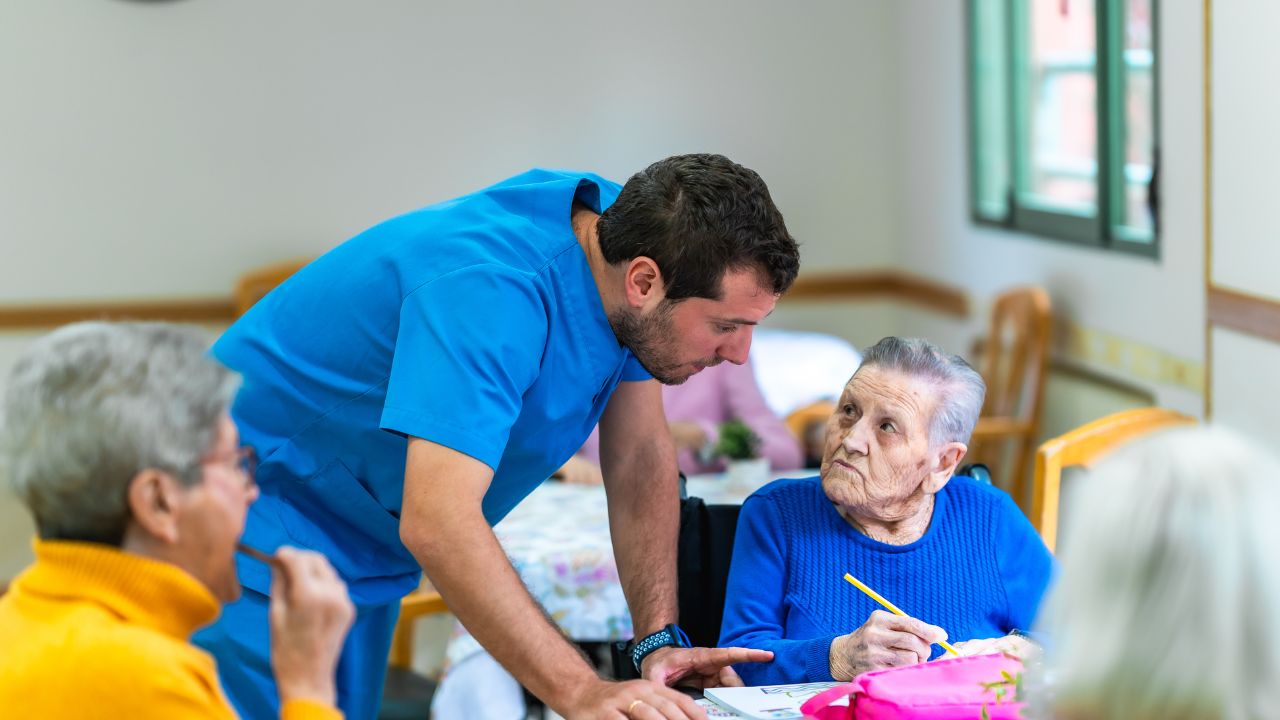The primary care model dates back to the beginning of modern nursing and the principles gleaned from Florence Nightingale’s notes.
In this model of nursing care, one primary nurse is responsible for a group of patients from admission to discharge. Primary nurses must evaluate a patient’s health care needs and plan, coordinate, and assess that care throughout the patient’s stay in the facility or unit. In this care model, the same nurse will care for a patient day after day until the patient is ready for discharge, allowing the nurse to plan and coordinate care over time and develop relationships with patients based on trust.
Although a nurse cannot remain with a patient 24 hours per day for the duration of the patient’s hospital stay, the primary care nurse maintains responsibility for coordinating the clinical decisions and supervising the patient during the entire hospital stay.
What Are Characteristics of the Primary Care Nursing Model?
In the direct primary care model, nurses play a substantial part in patient care. While in other nursing care models, several caregivers share patient care responsibilities, primary care nurses are the points of consistent contact, promoting continuity of care and developing strong therapeutic relationships with patients. Primary care nurses are the guardians of this model, showing empathy and commitment, which are central to patient-centered care.
What Do Primary Care Nurses Do?
Primary care nurses are often nurse practitioners (NPs), but may also include registered nurses (RNs). They are highly skilled professionals capable of dealing with various patient needs. They are not just treatment and medication administrators but also educators, giving patients information on preventive care, lifestyle changes, and chronic condition management. They help patients navigate the challenging healthcare terrain, sharing knowledge and a sympathetic touch.
Primary care nurses are instrumental in improving patient outcomes and promoting long-term health by providing personalized care plans and direction on healthy lifestyles. Their commitment is not limited to the traditional nursing concept; it encompasses holistic care that sees beyond the physical health aspects and looks at patients’ psychological and emotional well-being.
The whole patient perspective is one of the critical elements of the primary care nursing approach. In this model, nurses treat not just physical conditions but also the emotional, social, and psychological aspects of the patient’s well-being. Recognition of these attributes leads primary care nurses to provide patient-centered care, addressing the underlying causes of health issues and promoting general health. Primary care nurses support patients on a path to all-around health and vitality in a caring and supportive manner.
Success of the Primary Care Nursing Model
This nursing care model is closely associated with the patient-centered care philosophy, which, in turn, is associated with greater patient satisfaction and in some cases, better patient outcomes. Patients tend to be more satisfied when they know there is a nurse responsible for their care who is available to provide information and education.
Studies have shown a reduction of the following adverse events following the implementation of the primary nursing care model:
- Pressure ulcers
- Patient falls
- Urinary infections
- Infection of peripheral and central venous catheters
Other studies have reported that patients with the highest continuity of care—a characteristic of the primary care nursing model—had lower levels of comorbidities, disease severity, and impaired cognitive status at discharge than when they were admitted.
Additional studies found an 80 percent reduction in missed care and a reduction in the length of patient hospital stays overall.
Advantages of the Primary Nursing Care Model
In addition to the previously mentioned evidence of this model’s success, the following are some advantages of the primary nursing care model for patients:
- Ensuring continuity of care
- Reducing the number of clinicians issuing nursing prescriptions and interventions
- Reducing the likelihood of errors and missed care
- Promoting the relationship between nurses and patients
- Allowing personalized care and increased satisfaction
- Encouraging and educating for self-care
- Improving communication between nurses and patients
For nurses, the primary care nursing model typically increases their satisfaction, enables them to use all their skills, and makes them feel more fulfilled by the profession. Here are some specific advantages of this model for primary care nurses:
- Improving relationships with patients
- Maximizing the knowledge of each patient’s status and the identification of patient needs
- Increasing the capacity for prescription and evaluation
- Allowing the identification of the outcomes of nursing care in terms of health gains, such as a reduction in the number of infections
- Facilitating communication among nurses, patients, family members, doctors, and other health professionals
- Facilitating the education of patients and caregivers
- Promoting a more effective and efficient discharge planning
- Providing greater autonomy to nurses
- Personalizing responsibility and promoting creativity
- Improving nursing documentation and avoiding fragmentation of care
Finally, for healthcare institutions, the primary care nursing model facilitates a higher quality of care and increases the satisfaction of patients and family members.
Disadvantages of the Primary Nursing Care Model
As with any nursing care model, the primary care model has some drawbacks in addition to its advantages.
- Some nurses lack the training, knowledge, or decision-making capacity to take on the responsibility of coordinating care.
- Nurses who take on the full responsibility of caring for a patient without proper preparation can easily experience burnout.
- There is a greater risk of primary care nurses developing emotional involvement with the patient, which can lead to increased stress.
- Quality of care depends on the nurses’ qualifications, which raises questions regarding the equity of care.
- This model requires more clinicians, which increases costs for facilities.
Is the Primary Care Nursing Model the Best?
Ultimately, there is no black-and-white answer to the question of the best nursing care model. Healthcare facilities and their nurse managers must analyze sociocultural, geographical, and economic factors, their organization’s dynamics, and the complexity level of their patients’ healthcare needs. Furthermore, nurse managers must consider the needs and strengths of their nursing teams concerning patients and other healthcare professionals. The end goal must always be to satisfy the patient’s nursing needs, and, in some cases, the ideal nursing care model may even be a combination of multiple models.
Are you curious to know which other nursing care models are out there? Continue learning about nursing care models here.
Sources:














